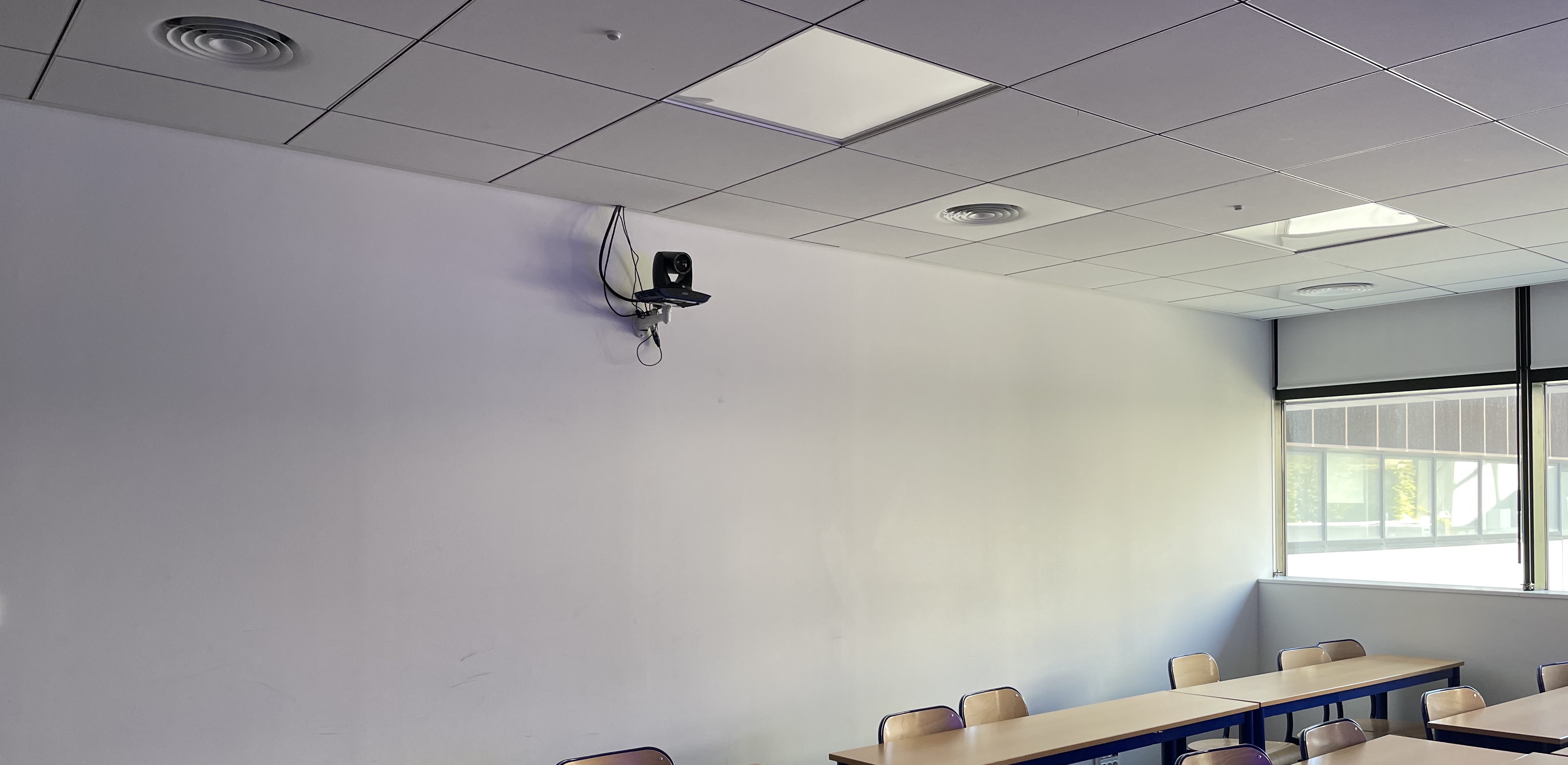

As the largest French-speaking multidisciplinary university, Aix-Marseille University (AMU) accommodates 80,000 students and nearly 8,000 staff members across 5 major campuses adhering to international standards. The university has a presence in 9 cities across 4 departments of the South Region.
Over the past two years, AMU has equipped itself with audiovisual equipment to ensure the pedagogical continuity of its institutions. Like all other higher education institutions, Aix-Marseille anticipated the uncertainties of the health crisis in order to deliver a portion of its courses remotely.
Around a hundred Kast cameras are now present in lecture halls and classrooms on different university campuses. Installed at the back of the rooms, they are seamlessly integrated with the rest of the equipment.
We met Philippe Martinasso, audiovisual technician on the Marseille campus, a few months ago, as well as Dominique Jaccard, sound engineer and integration manager at Aix-Marseille University, who explained how he manages audio in classrooms and lecture halls. We also spoke to AMU students who shared their remote learning experiences.
On March 17, 2020, France went into lockdown. All universities were forced to close their doors. Emergency solutions were swiftly implemented. Zoom and Teams made their grand entrance into higher education institutions, and teachers had to quickly adapt their work habits.
Two years later, there has been significant progress. We're witnessing a surge in digitalization, a forced and rapid transition catalyzed by the pandemic.
To cope with this crisis, universities have access to emergency funds, treasuries they've unlocked for equipping themselves.
Equipping is good, but with what?
Three essential points here: capture, dissemination, sharing.
Course capture was done through two main methods: via the webcam of a computer for fully remote courses, with the teacher at home, and with cameras installed at the back of rooms.
As mentioned earlier, Aix-Marseille University has over a hundred Kast cameras distributed across its various campuses, at the back of rooms. The cameras are controlled using Extron boxes or tablets. From the tablet, the teacher can choose to only stream the camera image, their presentation, or both! They can also start a recording or decide to be broadcast live to their students.
The cameras were heavily used for a few months when room capacities were limited. Thus, 50% of students could attend courses remotely while the rest were present in the room. This is what's known as hybrid or comodal and hyflex courses.
The first tool implemented at AMU was the Zoom video conferencing platform. A robust solution that was already present on the market two years ago, Zoom maintained interaction between teachers and students, enabling remote learning. Despite its high pricing, video conferencing maintained connection. The pricing is explained by the number of users and the bandwidth cost of a meeting with 300 students, for instance. Streaming is also a potential broadcasting solution in universities, as discussed here.
Moodle is used at Aix-Marseille University as the Learning Management System (LMS), similar to a majority of other French universities. Many teachers were already using it to share course content, documents, videos, images... It's the most suitable tool and is highly recommended for both students and teachers.
Nonetheless, other tools have been highlighted during this changing period.
Ultimately, thanks to the Kast cameras and ceiling micropanels installed in classrooms, all types of courses were delivered. Even today, tutorials are available on the University's POD video hosting platform*. The videos are accessible only to the concerned students after authentication.
Very few courses were delivered live on this platform since the latency of about 12 seconds prevents interaction. For live teaching, Zoom was the most-used tool by teachers.
*POD is an open-source platform created by Nicolas Caen, which hosts university videos and broadcasts them to students. It's like the French university's YouTube. POD has been used at Aix-Marseille University for several years.
Numerous things have been implemented; today, hybrid and remote options are technically feasible. The equipment is there; unfortunately, it's still underutilized.
Through conversations with teachers, we realized that many are unaware that this equipment is available. Nevertheless, some are seeking these kinds of solutions.
For remote students, they sometimes feel neglected when a hybrid class is conducted via Zoom. The teacher, connected via video conference with their computer's webcam, faces an in-person class and can hardly deliver quality teaching to distant learners.
There are still significant challenges to address!

